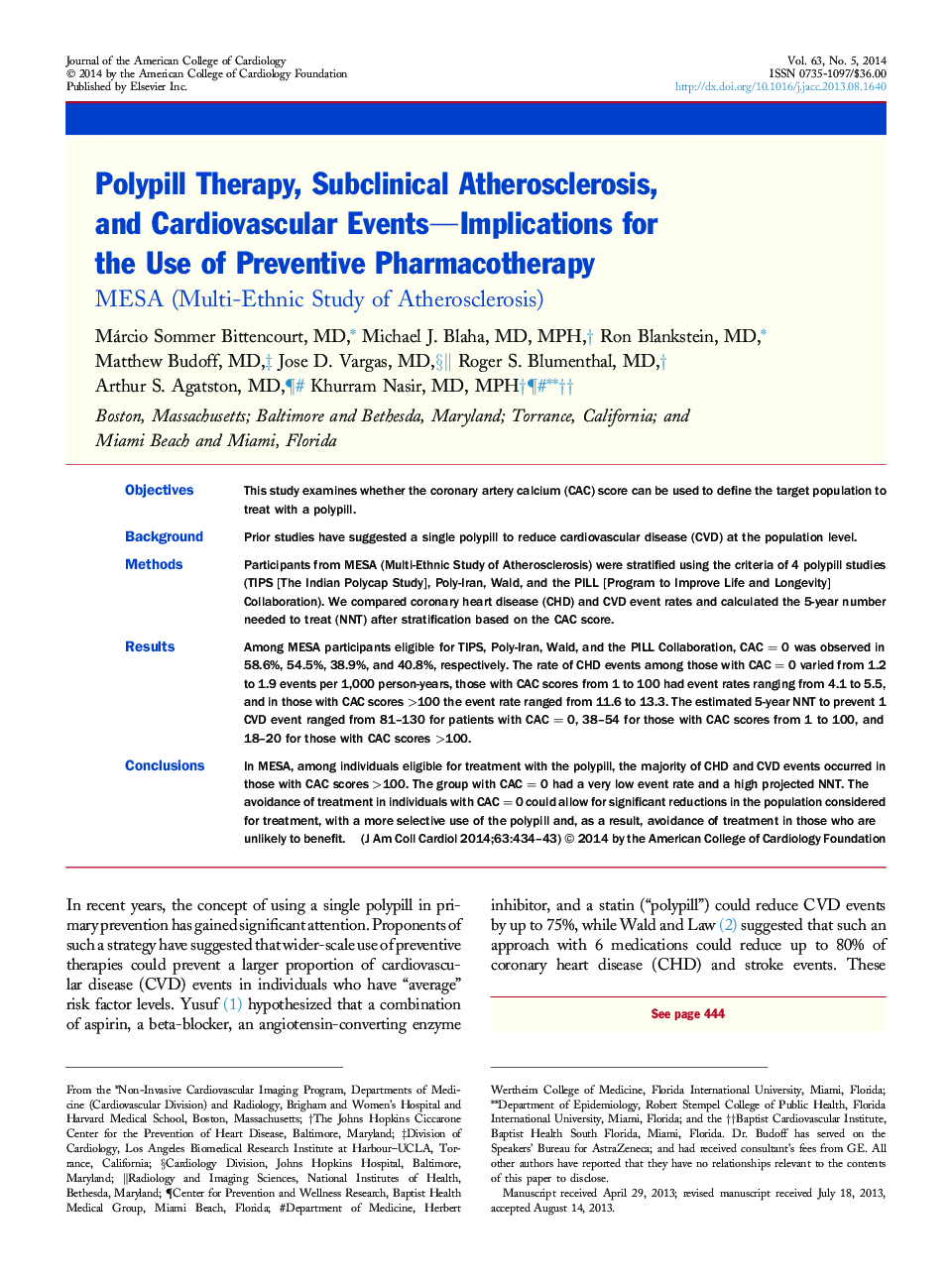| Article ID | Journal | Published Year | Pages | File Type |
|---|---|---|---|---|
| 2944988 | Journal of the American College of Cardiology | 2014 | 10 Pages |
ObjectivesThis study examines whether the coronary artery calcium (CAC) score can be used to define the target population to treat with a polypill.BackgroundPrior studies have suggested a single polypill to reduce cardiovascular disease (CVD) at the population level.MethodsParticipants from MESA (Multi-Ethnic Study of Atherosclerosis) were stratified using the criteria of 4 polypill studies (TIPS [The Indian Polycap Study], Poly-Iran, Wald, and the PILL [Program to Improve Life and Longevity] Collaboration). We compared coronary heart disease (CHD) and CVD event rates and calculated the 5-year number needed to treat (NNT) after stratification based on the CAC score.ResultsAmong MESA participants eligible for TIPS, Poly-Iran, Wald, and the PILL Collaboration, CAC = 0 was observed in 58.6%, 54.5%, 38.9%, and 40.8%, respectively. The rate of CHD events among those with CAC = 0 varied from 1.2 to 1.9 events per 1,000 person-years, those with CAC scores from 1 to 100 had event rates ranging from 4.1 to 5.5, and in those with CAC scores >100 the event rate ranged from 11.6 to 13.3. The estimated 5-year NNT to prevent 1 CVD event ranged from 81–130 for patients with CAC = 0, 38–54 for those with CAC scores from 1 to 100, and 18–20 for those with CAC scores >100.ConclusionsIn MESA, among individuals eligible for treatment with the polypill, the majority of CHD and CVD events occurred in those with CAC scores >100. The group with CAC = 0 had a very low event rate and a high projected NNT. The avoidance of treatment in individuals with CAC = 0 could allow for significant reductions in the population considered for treatment, with a more selective use of the polypill and, as a result, avoidance of treatment in those who are unlikely to benefit.
